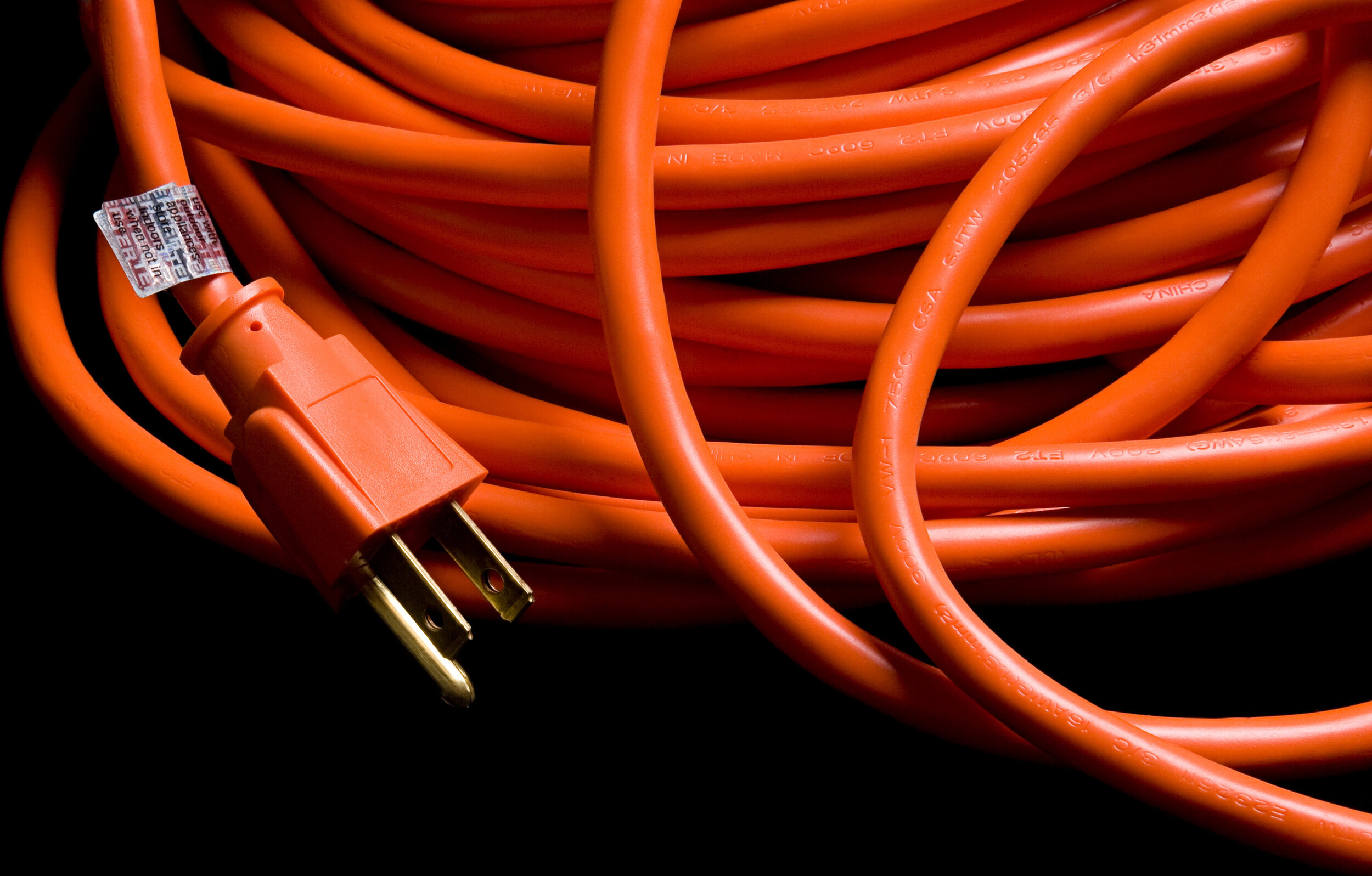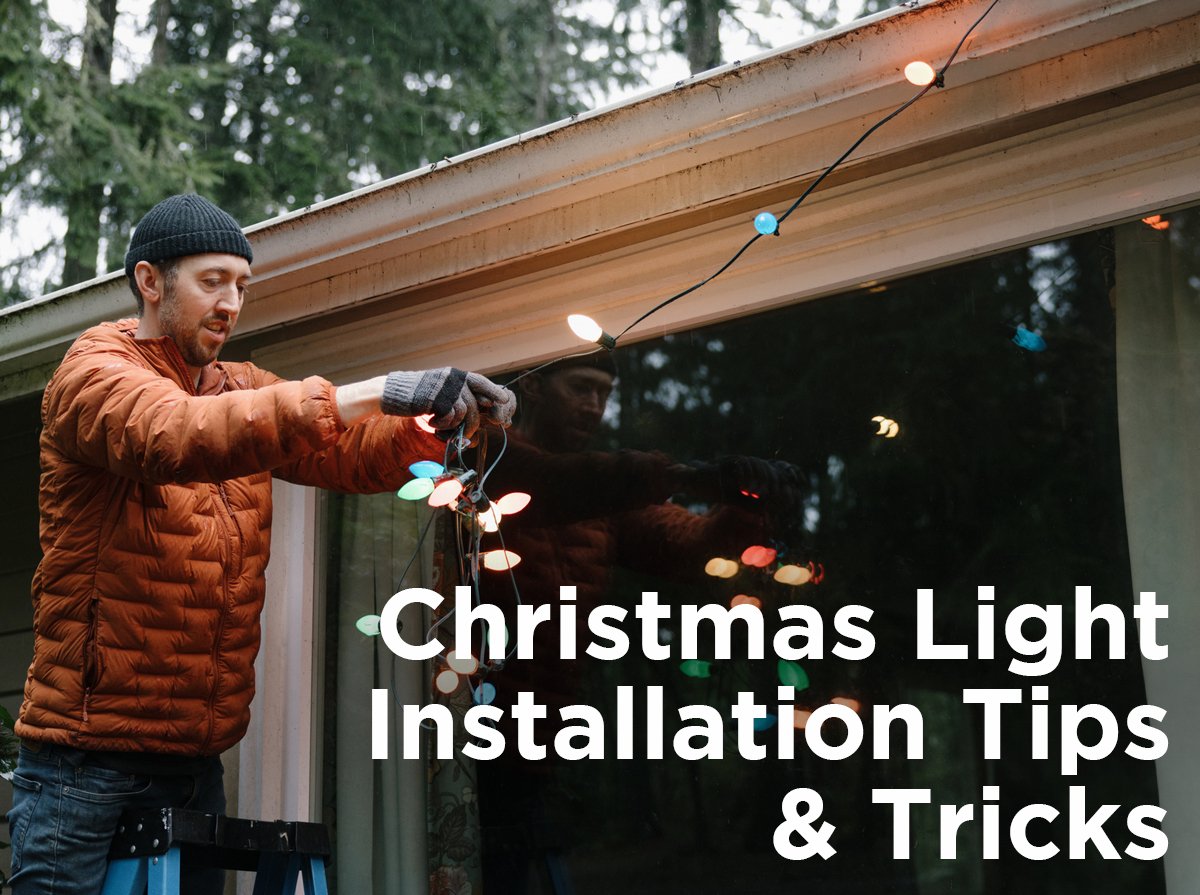Tips for Protecting Outdoor Light Strings Part 1
Using outdoor light strings has become one of the most popular ways to illuminate outdoor spaces. You might have patio lights strung across your backyard or use dozens of Christmas light strings to build incredible displays during the holiday season. When installing your light strings, you should always make sure that they are as protected as possible from anything that can cause damage or electrical shorts. There are many ways to do this, so we will cover the most important tips. In this first part, we’ll discuss what strings and components are safe for outdoor use, when to cut light strings, and how to keep connections safe.
Use Outdoor Rated Strings
Before ever placing any light string outside, you should always check to make sure that the string is safe for outdoor use by looking at the safety rating. Rope light, patio light strings, and many Christmas light strings are safe for both indoor and outdoor use. Designed with sturdier materials, these lights can withstand the weather conditions. Some Christmas light strings, however, are only rated for indoor use. Using these lights outdoors can cause them to fail prematurely or even short out if they are exposed to water.
Don’t Use Old or Worn Strings
When was the last time you bought new light strings for your Christmas displays? If it’s been a while or your lights get stored in a hot attic for 10 or so months out of the year, chances are you might need some new ones. When you first get your lights out you should use testers to check for damaged sockets, bad bulbs, or blown fuses and make any necessary repairs. Strings with worn or brittle wires should be immediate thrown away as these lights can potentially pose a fire hazard.
Use Outdoor Rated Bulbs
While the majority of C7 and C9 bulbs are safe for outdoor use, the same cannot be said for other types of bulbs used in patio light strings. Incandescent bulbs are safe for outdoor use as long as they are protected from direct contact with water. If used in an open area, the lights should be taken down immediately after an event. Where and when LED bulbs can be used depends on the safety rating. Damp location rated bulbs can be used where moisture is present, but should not come in direct contact with water. LED bulbs with this rating should not be used for permanently installed light strings. Wet location rated bulbs can come in direct contact with water and can be safely used in open areas.
Only Use Outdoor Rated Extension Cords
Like the light strings themselves, extension cords must also be rated for outdoor use. Outdoor extension cords have thicker insulation designed to withstand wetter and rougher conditions. In order to verify if your cord is outdoor rated, you will need to check the ratings code stamped directly on the cord. Made up of letters, this code is used to describe what the cord jacket is made of and the conditions it can withstand. An outdoor rated cord will have a ‘W’ listed in the code.
Only Cut Light Strings Designed to be Cut
Not all string lights are designed to be cut or shortened. Outdoor light strings with male and female end plugs are meant to be connected end to end. Shortening these lights voids the safety rating and can cause the string to no longer work. Patio light strings without end plugs are available that can be cut to any desired length. Commercial stringers and spools for Christmas lights come with sockets already attached and can be shortened as needed. For a truly custom Christmas light set up, use bulk wire. This wire has no end plugs or sockets, allowing you to choose where they go. Be sure to pay attention to the wire type, as sockets and end plugs must match. SPT-1 wire has a thin jacket while SPT-2 wire has a thicker jacket. Some patio strings have SJTW wire, which is a hard service, thermoplastics wire is rated for outdoor use. Incandescent and LED rope light spools can only be cut at the marked cutting points notated by a white dashed line. Cutting anywhere else will cause the rope light to fail. Rope light kits, on the other hand, have predetermined lengths and do not have cutting marks. If cut, these lights will no longer work and there is no way to attach it.
Properly Seal Connections Made in Rope Light
Incandescent and LED rope light spools are water resistant when left uncut, meaning they can be used outdoors with no worries. Though rope light can be cut at the notated cutting points, this creates an opening for water to get in and voids the UL listing. After trimming the rope light, you must seal the exposed ends with end caps and silicone glue. If you are splicing two sections together, seal the gap between sections with silicone glue and shrink wrap the connection with a shrink tube.
Protect Electrical Connections Between Strings
When setting up patio lights or Christmas displays, if may be necessary to plug several light strings together. To ensure connected plugs do not accidentally get pulled apart, wrap them with electrical tape. Keep in mind that electrical tape does not provide adequate protection against water. Cord protectors should be used to protect connections from water. If using power strips, use cord domes designed to fit both the power strip and connections. While water resistant, cord protector and domes are not completely water proof and should not be submerged in water. Connections can be placed on brick, block, and other similar items to keep them off of the ground and way from puddles.
Avoid Leaving Open Sockets
When bulbs are screwed into the sockets of outdoor light strings, it is harder for moisture and dust to enter the socket. Exposed sockets have nothing to prevent water and dirt from entering and causing a short. For this reason it is recommended that you avoid leaving sockets empty on outdoor light strings. Failed bulbs should be left in place until you have replacements on hand. The strings will still work even though a few bulbs no longer light.
Do you have any additional tips for protecting outdoor light strings? Share them in the comments below. Part 2 will cover protecting the wires and avoiding overloading your circuits. Be sure to visit our Facebook, Twitter, LinkedIn, Instagram, and Pinterest pages to find additional outdoor lighting tips and ideas!









